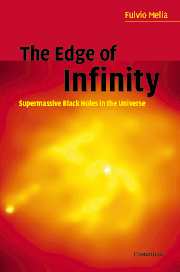1 - The most powerful objects in the universe
Published online by Cambridge University Press: 11 August 2009
Summary
History's time line swept through 1963 with a breathtaking pace. The community of nations was about to welcome the birth of its newest member, Kenya, which that year attained independence from Great Britain. The Vietnamese military, meanwhile, was in the process of overthrowing the regime of Ngo Dinh Diem, deepening the US involvement in Southeast Asia and setting the stage for a decade of discordant relations among the superpowers. Ironically, this was also the year in which the first test ban agreement between the USA and the Soviet Union was ratified, concluding a nervous endeavor to ease growing nuclear tensions. For the individuals in society, the issue of women's rights resurfaced, promoted by Betty Friedan's just-released book Feminine Mystique. And while readers were being exposed to the idea of a modern woman discarding her traditional role, humanity as a whole was gaining some leverage over nature with the discovery of a vaccine against the measles. Many remember 1963 for the tragic assassination of President John F. Kennedy.
This tessellation of historical markers stirring the world in 1963 formed quite a backdrop for two minor events that would lead, over time, to the eventual uncloaking of the most powerful objects in the universe. At Mount Palomar Observatory, Maarten Schmidt was pondering over the nature of a starlike object with truly anomalous characteristics, while Roy Kerr, at the University of Texas, was making a breakthrough discovery of a solution to Albert Einstein's (1879–1955) general relativistic field equations.
- Type
- Chapter
- Information
- The Edge of InfinitySupermassive Black Holes in the Universe, pp. 1 - 16Publisher: Cambridge University PressPrint publication year: 2003

